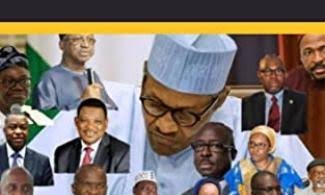Amazon Publishes Book On Nigerian President Buhari And People Around Him From 2015
Amazon Corporation, a US-based multipurpose publishing company, has published a 578-page book on the administration of President Muhammadu Buhari and the activities of people around him from his assumption of office in 2015 to date.
SaharaReporters gathered that the book, “People Around Nigeria’s President Buhari”, details men and women who worked with President Buhari for two terms in office between 2015 and 2023.
The book gave details on how the ruling All Progressives Congress (APC) was formed by a group of divergent political actors and political parties, leading to the defeat of the incumbent President Goodluck Jonathan of the Peoples Democratic Party (PDP) in 2015 and ended the party’s 16-year control of power in the country.
The book also featured the profile of the first and second-term ministers, relevant close aides in and around the Presidential Villa in Abuja; the APC state governors from 2015, party leaders, National Assembly leaders, heads of security and intelligence organisations including the Department of State Services (DSS), National Intelligence Agency (NIA), National Security Agency (NSA), amongst other.
Also featured were anti-corruption agencies including the Economic and Financial Crimes Commission (EFCC), Independent Corrupt Practices and Other Related Offences Commission (ICPC), and other socioeconomic ministries and agencies including the Central Bank of Nigeria (CBN), Nigeria Customs Service (NCS), Nigeria Immigration Service (NIS), Federal Inland Revenue Service (FIRS), Nigerian National Petroleum Company Limited (NNPCL), Nigerian Communications Commission (NCC) as well as the First Lady, Aisha Buhari.
The author of the book, Yusuf Ozi-Usman, said that he started work on the book in 2014 when the alliance talks were going on amongst the political parties that formed the APC, and continued all through the eight years of Buhari’s government.
Ozi-Usman said, “I kept on updating it to capture every development, including the death of some members of the government, infrastructural development of the government and cabinet changes and many more, up to the time the President was two months to the completion of his two-term tenure.”


